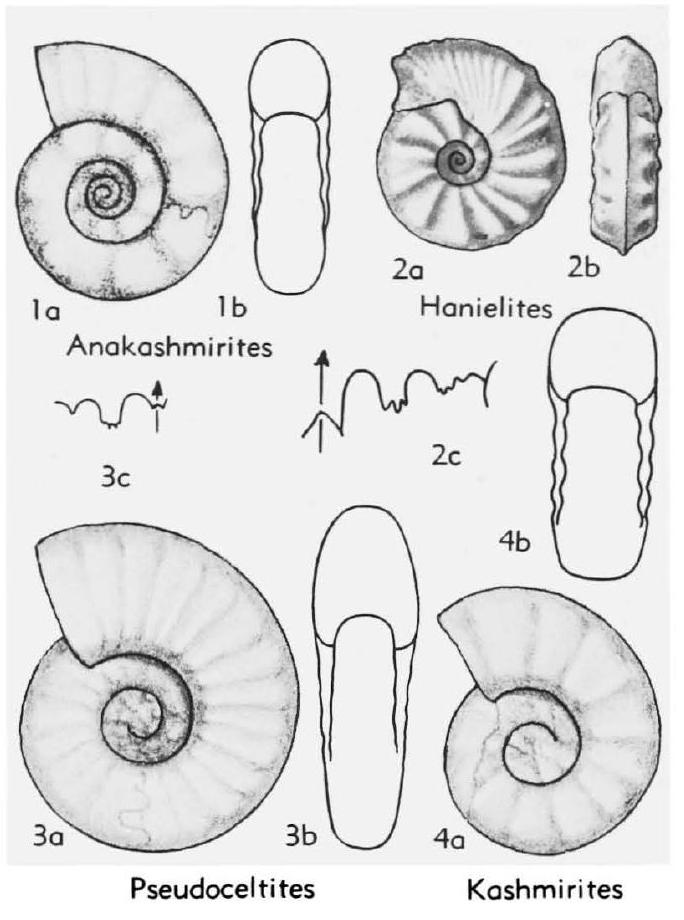Welcome to the Treatise on Invertebrate Paleontology!
Please enter a genera name to retrieve more information.

Kashmirites
Classification
Phylum:
Mollusca
Class:
Cephalopoda
Subclass:
Ammonoidea
Order:
Ceratitida
Suborder:
Ceratitina
Superfamily:
Noritaceae
Family:
Kashmiritidae
Formal Genus Name and Reference:
Kashmirites DIENER, 1913
Type Species:
Celtites armatus Waagen, SD DIENER, 1915
Images
(Click to enlarge in a new window)
Fig. 174,4. *K. armatus (WAAGEN), Himalaya; 4a,b, X1 (110*)
Synonyms
Geographic Distribution
Himalaya-Timor
Age Range
Beginning Stage in Treatise Usage:
Scyth.
Beginning International Stage:
Induan
Fraction Up In Beginning Stage:
0
Beginning Date:
251.9
Ending Stage in Treatise Usage:
Scyth.
Ending International Stage:
Olenekian
Fraction Up In Ending Stage:
100
Ending Date:
246.7
Description
More or less evolute, whorls quadrate, with strong, commonly tuberculate ribbing on inner whorls, degenerating into striation on outer whorls, venter wide, subtabulate costae commonly continuous across venter. Suture ceratitic, generally with only 2 lateral lobes
References
Diener, Carl, 1913, Triassic faunae of Kashmir: India Geol. Survey Mem., Palaeont. Indica, new ser., v. 5, no. 1, p. 1-133, pl. 1-13.
Museum or Author Information
Classification
Phylum:
Mollusca
Class:
Cephalopoda
Subclass:
Ammonoidea
Order:
Ceratitida
Suborder:
Ceratitina
Superfamily:
Noritaceae
Family:
Kashmiritidae
Formal Genus Name and Reference:
Kashmirites DIENER, 1913
Type Species:
Celtites armatus Waagen, SD DIENER, 1915
Images
(Click to enlarge in a new window)
Fig. 174,4. *K. armatus (WAAGEN), Himalaya; 4a,b, X1 (110*)
Synonyms
Geographic Distribution
Himalaya-Timor
Age Range
Beginning Stage in Treatise Usage:
Scyth.
Beginning International Stage:
Induan
Fraction Up In Beginning Stage:
0
Beginning Date:
251.9
Ending Stage in Treatise Usage:
Scyth.
Ending International Stage:
Olenekian
Fraction Up In Ending Stage:
100
Ending Date:
246.7
Description
More or less evolute, whorls quadrate, with strong, commonly tuberculate ribbing on inner whorls, degenerating into striation on outer whorls, venter wide, subtabulate costae commonly continuous across venter. Suture ceratitic, generally with only 2 lateral lobes
References
Diener, Carl, 1913, Triassic faunae of Kashmir: India Geol. Survey Mem., Palaeont. Indica, new ser., v. 5, no. 1, p. 1-133, pl. 1-13.
